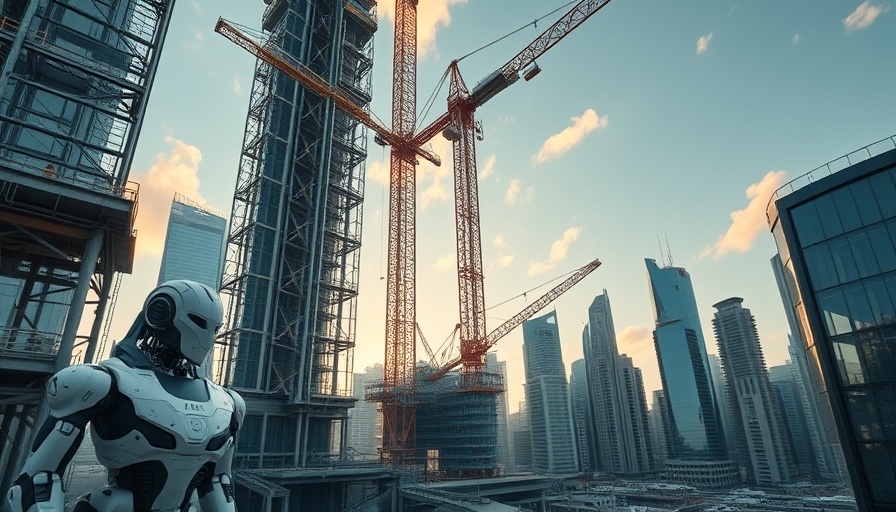
The Transformation of Industry: AI at Work
Artificial Intelligence (AI) has become a real game changer in numerous ways, fundamentally altering how industries operate. This technology has moved beyond mere theoretical applications and is now delivering tangible benefits across sectors such as construction, manufacturing, healthcare, and finance. It is essential for professionals in these fields—especially those within construction and engineering—to understand how AI can optimize their operations and drive innovation.
Why AI Matters in Construction
For construction professionals, the use of AI can lead to significant improvements in efficiency and safety. From automating mundane tasks to handling complex data analysis, AI tools can assist with project management, resource allocation, and predictive maintenance. According to recent insights, AI applications can enhance everything from design to execution, enabling teams to work smarter rather than harder.
The Role of Machine Learning in Decision Making
Machine learning—a subset of AI—is particularly impactful in providing data-driven recommendations. By analyzing diverse datasets, machine learning models help identify trends and insights that may go unnoticed when judged through traditional methods. This capability not only supports strategic decision-making but can also lead to more accurate forecasting in project timelines and budgets.
AI-Driven Benefits: Streamlining Processes
For instance, AI can automate routine reporting, freeing professionals up to focus on higher-level decision-making tasks. As highlighted in various sources, the ability of AI to perform anomaly detection in manufacturing can prevent costly breakdowns by predicting maintenance needs. Imagine translating that to construction, where timely alerts about equipment risks can save money and enhance safety on job sites.
What Challenges Come with AI Adoption?
While the benefits of AI are vast, organizations face challenges when implementing these technologies. A key aspect is having robust data governance; without high-quality data, any AI initiative is likely to falter. Additionally, the integration of AI requires a cultural shift within organizations. The workforce must be prepared to adapt, manage, and fully embrace these new tools for AI to be effective.
Fostering an AI-Ready Environment
For construction professionals aiming to implement AI, it’s crucial to create an environment where innovation thrives. Businesses should conduct AI readiness assessments and foster cross-functional collaboration. Employee training programs can ensure team members are equipped with the skills necessary to leverage AI successfully in their workflows.
The Future of AI: Opportunities Ahead
Looking forward, the potential for AI in construction and other industries is vast. As technology continues to evolve, we can expect to see enhanced tools that improve project outcomes and safety standards. AI isn't just about efficiency; it holds the promise of creating entirely new ways of working and interacting in these fields.
As industry professionals, the challenge remains: How do we effectively and ethically integrate AI into our practice? The journey starts with understanding the technology’s capabilities and carefully planning its implementation into strategies that align with overall business goals.
As AI begins to take center stage, getting ahead of the curve is vital. For those in sectors like construction and engineering, the time to learn and adapt is now. Embrace AI’s benefits today and position your organization for success.
 Add Row
Add Row  Add
Add 




Write A Comment